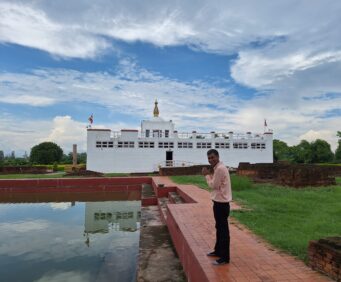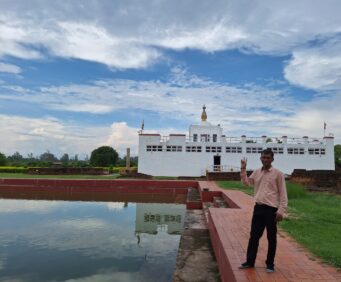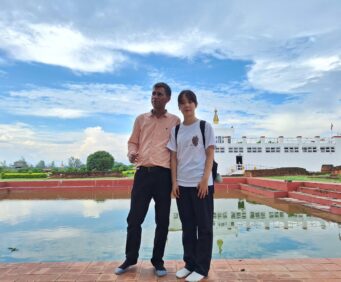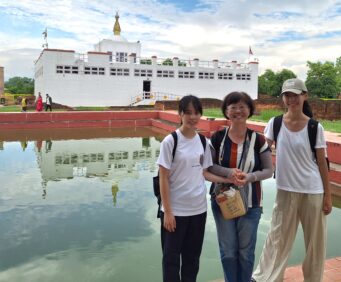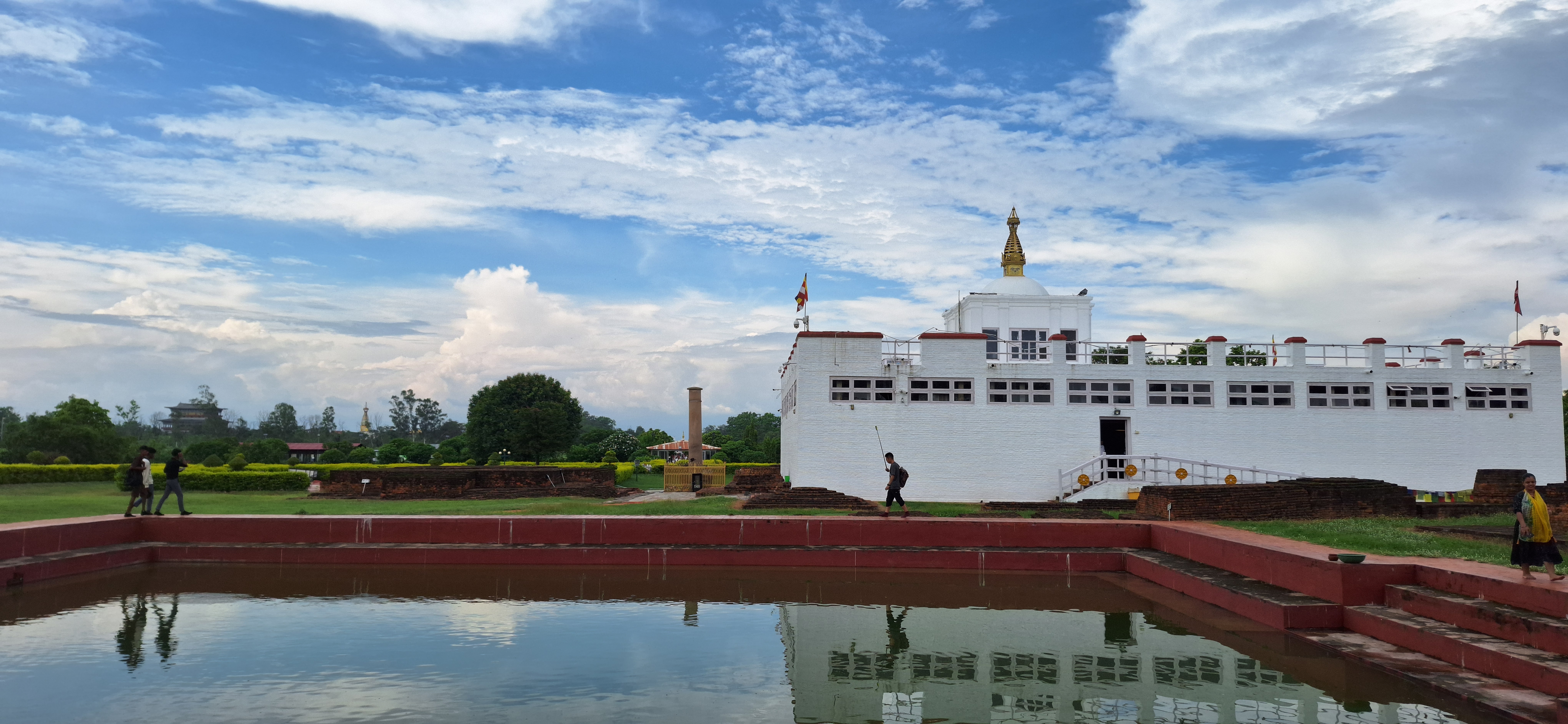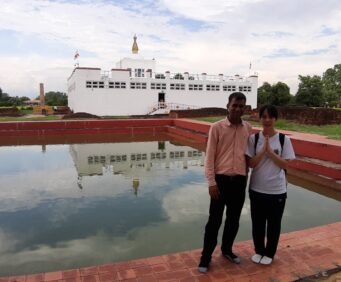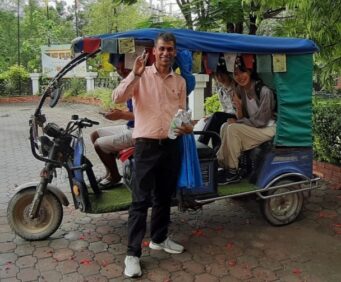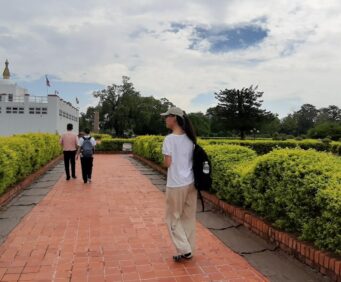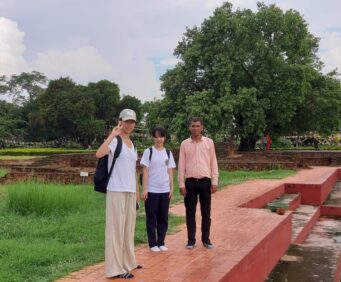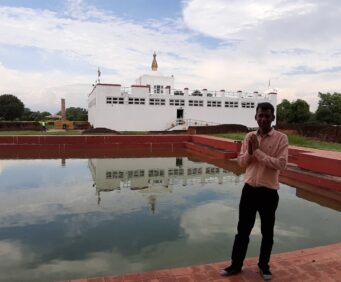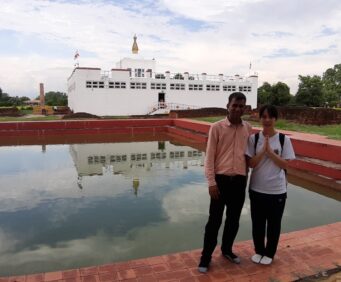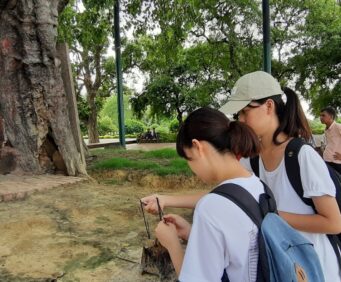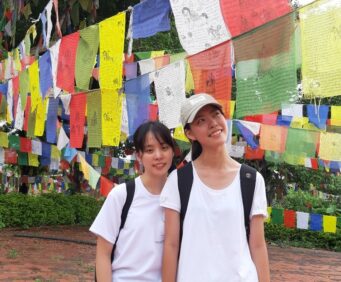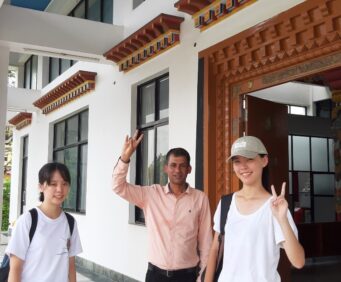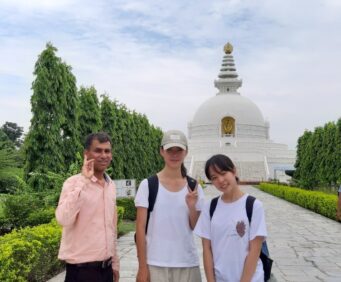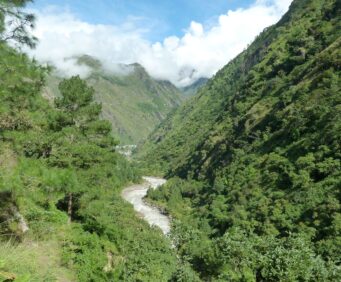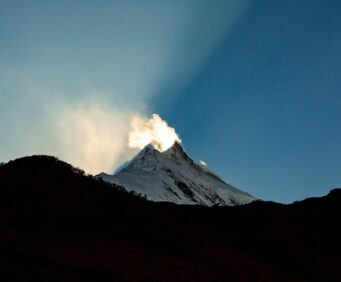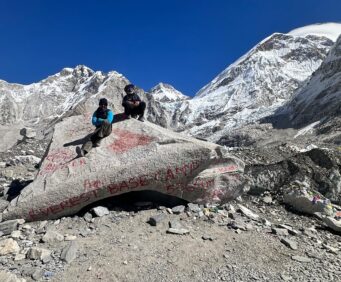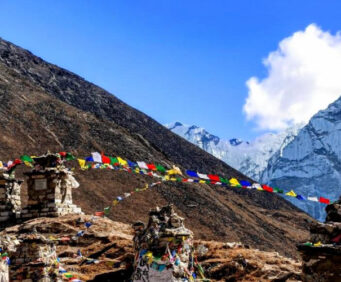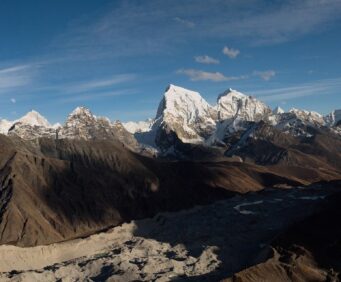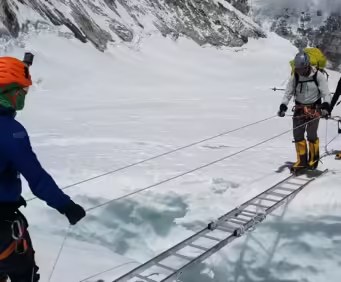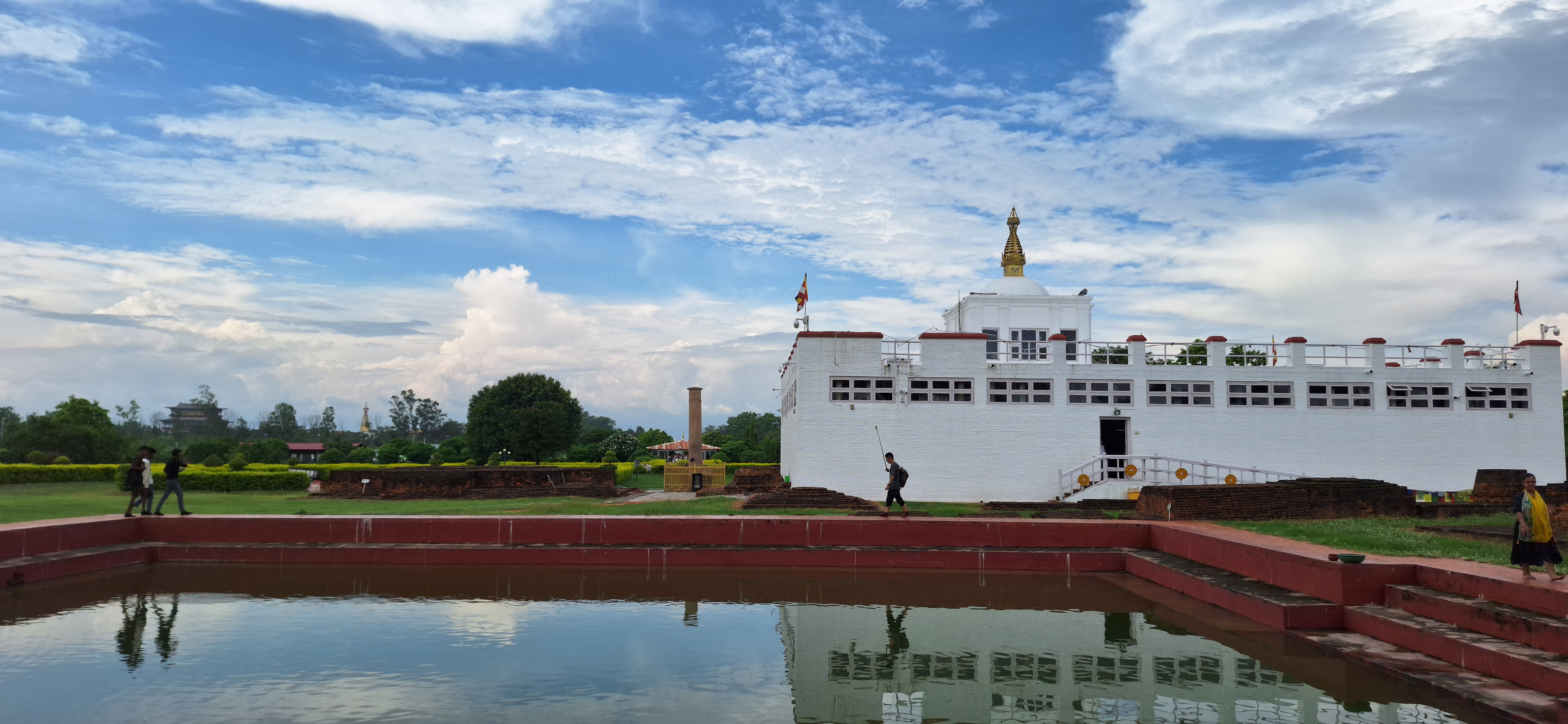
Buddha Circuit Tour in Nepal
Overview
The Buddha Circuit Tour is a unique spiritual experience that nestles away within Nepal’s peaceful surroundings. Going on this pilgrimage is not only a physical trek; it’s a spiritual journey following in the footsteps of the enlightened one, Siddhartha Gautama, who reached Nirvana beneath the Bodhi tree. Nepal provides the ideal setting for this spiritual journey because of its vast cultural diversity and deep spiritual legacy.
In the next 14 days, We reveal an overview of Nepalese culture, history, and nature panorama most exquisitely. It begins with 2 days in Kathmandu where one can walk around through such lanes and places of the capital city to experience the vibrant atmosphere of Kathmandu. The iconic landmarks such as “Swayambhu” Monkey Temple and Durbar Square offer a memorable trip.
At the moment of the journey, the vehicle moves slowly and stops at Bandipur and Pokhara and it gives a chance for rest and fun because the tourists see those places surrounded by magnificent views of nature and culture. People in Pokhara can engage in many different things such as hiking to waterfalls and visiting Tibetan villages to simply enjoy the calm atmosphere in the World Peace Stupa where is located.
The itinerary combines set sightseeing with free time and other optional excursion opportunities, such as visiting the Australian Camp. By doing so, the itinerary will remain flexible enough to allow everyone to explore and enjoy things that are interesting to them personally.
The Buddha Circuit Tour lasts longer and further, as the travelers continuously explore the Nepalese tradition through visits to some traditional towns like Tansen and pilgrimage sites like Lumbini, the birthplace of Buddha.
Animal lovers will need more of Chitwan National Park where we can enjoy activities like an elephant safari or an hour spent walking the village. The end of his journey is depicted as coming to an end, with a return to Kathmandu, and going to the eternal peace of Nagarkot to gaze at the mighty Himalayas’ exquisite view.
The given plan consists of the fact that here, the opportunities for cultural immersion are widely available through visiting ancient monasteries or performing traditional dances. In the end, you will have a couple of days to roam around Kathmandu and it will be adequate for you to think about all that you have experienced before you leave this country.
Highlights of the Buddha Circuit Tour
- Kathmandu: The Place Buddha Stupa.
- Limbini: Birthplaces of the Buddha.
- Kapilvastu: Exploring the Ancient Kingdom of the Buddha.
- Tansen: Enjoying a peaceful respite amidst Himalayan Views.
- Bhairahawa and Tilaurakot: Exploring about an ancient Citadels associated with the Buddha’s princely life.
- Visit Numerous monasteries, stupas, and sacred sites.
- Engage in introspection, Meditation, and self-reflection.
- Explore the tapping into the transformative power of the Buddha’s teachings.
Itinerary
Day 01 Arrive at the hotel in Kathmandu
Today, you arrived at Nepal’s capital, Kathmandu. Make your way to the hotel. Accommodations and stay in the well-known downtown Thamel neighborhood, in a three-star hotel
Day 02Kathmandu, Half-day Sightseeing
After Breakfast, We travel to Durbar Square, where we first see the market, churches, and palaces from the Middle Ages. With luck, we might be able to see Kumari, the living goddess. Next, we go to the “Temple of the Monkey,” the Swayambunath stupa. We ascend the 365 steps to the summit of the temple, where prayer flags and lesser temples await us.
We can send prayers to the heavenly ones and spin prayer mills. Gorgeous vistas open out in front of us; the towering peaks of the Himalayas are visible. You can spend your afternoon doing something free, like strolling around the Thamel district’s narrow alleyways, shopping, or just unwinding with a drink.
Day 03Travel to Bandipur
This little village, which is a new tourist destination in Nepal, is situated in the Tanahun district and provides various cultural attractions along with a feel of rural life. The area surrounding the bazaar is teeming with historic homes and amiable locals.
It is reminiscent of Europe in the eighteenth century. Additionally, Bandipur offers views of the Manaslu Mountains at sunrise and dusk. From Bandipur, one can see not only Manaslu but also the Annapurna and Ganesh Himal mountains.
Day 04-06Travel to Pokhara
We stayed three nights in this amazing city, Pokhara. The World Peace Stupa, Devi’s Falls, trips to monasteries, and witnessing the most breathtaking dawn from the summit of Sarangkot are just a few of the activities we have planned.
We’ll have lots to do in our spare time, like paragliding, boating, sound bowl therapy, visiting museums, and more. Dinner and a Nepalese dance performance take place on the lakefront in the evening.
Day 07Travel to Tansen
Travelers have not yet found this stunning little gem in the Rockies. we have an amazing view of the Himalayas from this location. We go to the Raji Mahal, also nicknamed the Nepalese “Taj Mahal” nose, on the seventh day.
Day 08-09Travel to Lumbini
The trip takes roughly 1 and a half hours from Tansen to Lumbini by bus. Lumbini, a UNESCO World Heritage Site, is well-known across the World as the birthplace of Gautam Buddha, the founder of the Buddhist faith and a symbol of peace. Lumbini’s spiritual significance has earned him great respect. Over 25 different countries have constructed monasteries in Lumbini.
Numerous Buddhist and Hindu pilgrims are drawn to Lumbini because to its cultural and religious significance. Explore the Mayadevi Temple, which honors Gautam Buddha’s mother, the Mayadevi Gardens, the sacred Lake Pushkarini, several monasteries, the Ashoka Piller, which was constructed by the illustrious Emperor Ashoka, and the Panditarama Vipassana Center in Lumbini.
Not only can one attain spiritual enlightenment through a visit to Lumbini, but one can also experience the peace that one can attain.
Day 09-10Travel to Chitwan
Chitwan National Park is our destination. The trip takes roughly 3 to 4 hours from Lumbini to Chitwan by bus. We reach Chitwan and stay there till the hotel.
Program without charge. Following supper, we’ll attend a folklore dance performance and get the chance to dance with the locals. We ride elephants in the early morning hours to explore the jungle, which is home to over 800 different species of birds. Apart from avian creatures, this place is home to rhinos, wild boar, crocodiles, and, with any hope, the renowned Bengal tiger.
Day 11Kathmandu, from there travel to Nagarkot, (sunset, sunrise)
Nagarkot, which is only 28 kilometers from Kathmandu, offers views of the dawn and sunset with the backdrop of Himalayan peaks.
Eight of the thirteen Himalayan mountain ranges, including Mount Everest, Mount Manaslu, the Annapurna Chains, the Ganesh Himal Mountains, the Langtang Mountains, the Rowaling Mountains, the Numbur Mountains, and lastly the Yugal Mountains, are visible from Nagarkot.
Day 12Dhulikhel, visit Namo Buddha Monastery, Dhulikhel
We can honestly state that Namo Buddha is a stunning location that is serene and well-kept. Its clean, chilly, and fresh air is ideal for introspection and meditation. The dawn is lovely in the morning, and the dusk is fantastic in the evening. The Himalayan scar ranges are stunning and well-maintained.
Namo Buddha is considered one of the most significant holy places in Nepal from a Buddhist perspective. Three significant Buddhist pilgrimage sites are Namo Buddha, Swayambhunath Stupa, and Boudhanath Stupa. We pause in Dhulikel for lunch on the way back.
Day 13Pashupatinath, Bhaktapur, Patan, Boudhanath
We are going to see the ancient royal cities of Pashupatinat, Bhaktapur, and Patan today. They are all designated World Heritage Sites. Patan and Bhaktapur both have stunning architectural landmarks. Magnificent courtyards and palaces can be found at ancient Buddhist and Hindu sites. Next, we’re going to the Boudhanath.
Kathmandu
One of the earliest structures in the Kathmandu Valley and one of the first to have a chronicle in writing is the Boudhanath Stupa. For Tibetans, it is one of the most important pilgrimage sites. In Kathmandu, the vicinity of the stupa is also referred to as Little Tibet. In 1979, UNESCO included it on the World Heritage List.
The most revered temple in Kathmandu for Hindus is Pashupatinath Temple. Foreigners can see the cremations near the Pashupatinath temple, even though only Hindus are permitted within the temple grounds. This region was designated a World Heritage Site by UNESCO in 1979 and is home to numerous Sadhus, or pious Hindus, which also draws large numbers of tourists.
Patan, Lalitpur
Patan Durbar Square. Unlike other Nepalese cities, Patan is primarily a Buddhist city. Just 50 Hindu temples and more than 136 Buddhist monasteries may be found in the city of Patan. The South Indian-style Krishna Temple, sunken bath, tall Taleju Temple, golden temple, and metal, wood, and stone carvings are some of Patani Durbar Square’s most well-known features.
Bhaktapur
Bhaktapur, often referred to as Bhadgaun, is well-known for its rich religious, cultural, and historical legacy. It is abundant in historical sculptures, religious principles, amazing cultural customs, architectural marvels, and old art, much like an open museum.
It is often referred to as the “city of the gods.” Temples, squares, courtyards, pagodas, and monuments in Bhaktapur. Classical homes, decorative stones, taps, and a collection of historically constructed Buddhist shrines and monasteries.
For both foreign and Nepalese visitors, Bhaktapuri Durbar Square is one of the most alluring locations. In Newari, the location is referred to as “Layaku”. The city’s identity is embodied in its historic buildings, monuments, and ancient temples and shrines that date back several centuries.
Highlights of ancient Nepalese art include the Krishna temple, the Golden Gate, the temple with fifty-five windows, and the museum’s statue of Bhupatindara Malla. You can witness all of these at one location: the great bell, the dog barking bell, the Siddhilaxmi temple, the Taleju Bhagwati temple, etc.
Additionally, Durbar Square serves as a gathering place for locals to relax, stroll, and enjoy themselves. This location is conveniently accessible from several regions of Bhaktapur.
Day 14Trip to Chovar,Parping and Dakshinkali Overnight
In the 14 day Morning: Depart from Kathmandu and head towards Chovar. We explore the historic Chovar Gorge and enjoy panoramic views of the Kathmandu Valley. Also, visit the Chovar Cave and learn about its religious and cultural significance.
Drive From Chover to Parping we reach there in at least 45 minutes to 1 hour and visit the sacred caves and also monasteries nestled in the hills. Explore the spiritual ambiance of Parping and discover its hidden treasures.
In Afternoon:
After the meal, We depart for Dakshinkali, famous for its revered temple dedicated to the Hindu goddess Kali.
we explore Dakshinkali Temple and witness the rituals performed by devotees. Visit nearby attractions such as the Shikharapur Pond and enjoy serene moments by the water. also, Enjoy lunch at a local restaurant and savor traditional Nepali cuisine.
Take a stroll around Dakshinkali and soak in the spiritual atmosphere.
we depart for Kathmandu with memories of a captivating overnight adventure amidst Nepal’s cultural and natural wonders.
Not satisfied with this itinerary?
Are you interested in planning a customized trip that suits you?
Useful Info
Accommodation
In Nepal, finding a place to sleep is rarely an issue, however, there aren’t many options outside of the well-known tourist areas. The cost varies greatly based on when and where you stay. The cost of a night can range from a few dollars in a trekking lodge to over $350 in a wildlife resort; however, most travelers stay in guesthouses, which usually charge between $5 and $35.
Different activities
Chitwan National Park: will witness a range of interactions that will revolve around wildlife encounters with nature itself. Some common activities include:
Elephant Safari: Travel by elephant and enjoy the jungle scenery through multiple lavish views of birds like rhinos, deer, and others.
Jungle Safari: The association will arrange many guided walks through the forest with professional naturalists to have a close encounter with various plants and animals.
Canoeing: It would be an amazing idea to take a slow boat ride along the Rapti River for wildlife observation encompasses crocodile sightings as well as a variety of bird species.
Bird Watching: Chitwan is an absolute paradise for birdwatchers and has lots to offer to the visitor not only in terms of sighting of the birds of the resident variety but also the ones of the transient variety.
Village Visits: Get factual knowledge about cultural backgrounds including their lifestyle within Tharu’s community in nearby places by going to the villages and also meeting with their people.
Tharu Cultural Show: Tharu people is notable for their traditional dances. As such, it is appropriate for the visitors to participate in their performances in the evening to show the colorful diversity and rich history of the location.
Sightseeing Tours: Contemplate UNESCO’s World’s Heritage including Pashupatinath Temple, Boudhanath Stupa, Swayambhunath (Monkey Temple) and the cities of Bhaktapur, Patan, and Kathmandu Durbar Square.
Museum Visits: The cultural aspect of Nepal can be experienced at the National Museum of Nepal, Patan Museum, and Tamraghaon Museum, to name a few.
Shopping: Take a stroll through some of the busiest markets such as Asan Bazaar and Thamel for souvenir shopping, handicrafts, silks, and traditional Nepalite artifacts.
Culinary Exploration: Indulge in the mouth-watering Nepali fare at popular restaurants or street food shops where you can also go for cooking classes to learn to prepare addicting dishes like momos and dal bhat – signature Nepali dishes.
Yoga and Meditation: Be a regular participant in the yoga and meditation classes that are scheduled at different yoga and meditation centers and studios in the town to refresh your tired mind and body.
Cultural Performances: Go to live music concerts, dances, and cultural events to see, hear, and be a part of Nepal’s arts and variety.
FAQs
Why is Kathmandu so famous?
It is especially well-known for its holy monuments in Kathmandu. The city’s terrain is dotted with several temples, monasteries, and stupas. Two particularly notable examples are the Pashupatinath Temple and Changu Narayan, which are renowned for their exquisite, detailed religious artworks.
